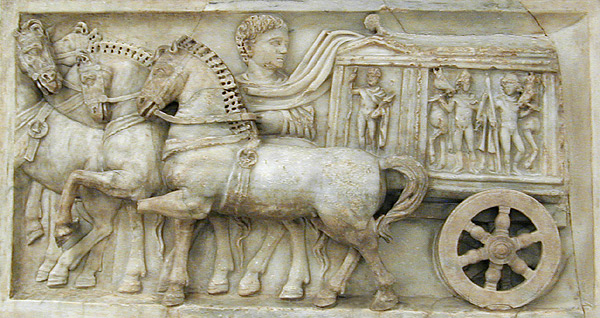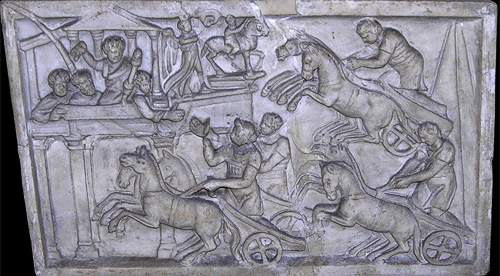

The Latin is pompa. On days when chariot races were held (ludi circenses), the ceremonies began with an elaborate procession headed by the dignitary who was sponsoring the games, followed by the charioteers and teams, musicians and dancers, and priests carrying the statues of the gods and goddesses who were to watch the races; in this relief of the procession, the dieties carried in a special cart are Jupiter, Castor, and Pollux. Ovid includes other deities in his list, culminating with Venus, given as special place in the poem as the goddess of love. The procession proceeded through the circus and ended at the pulvinar, a marble building resembling a temple rising from the third tier of seats on the Palatine side of the track. The statues and cult objects of the gods carried in the opening procession were placed here to watch the race; since this enclosure is directly opposite the finish line, the gods had a good view! The emperor also had a special box here, so he could be seen by the people when he attended the races. The relief below shows the gods enjoying the races as much as the emperor.
